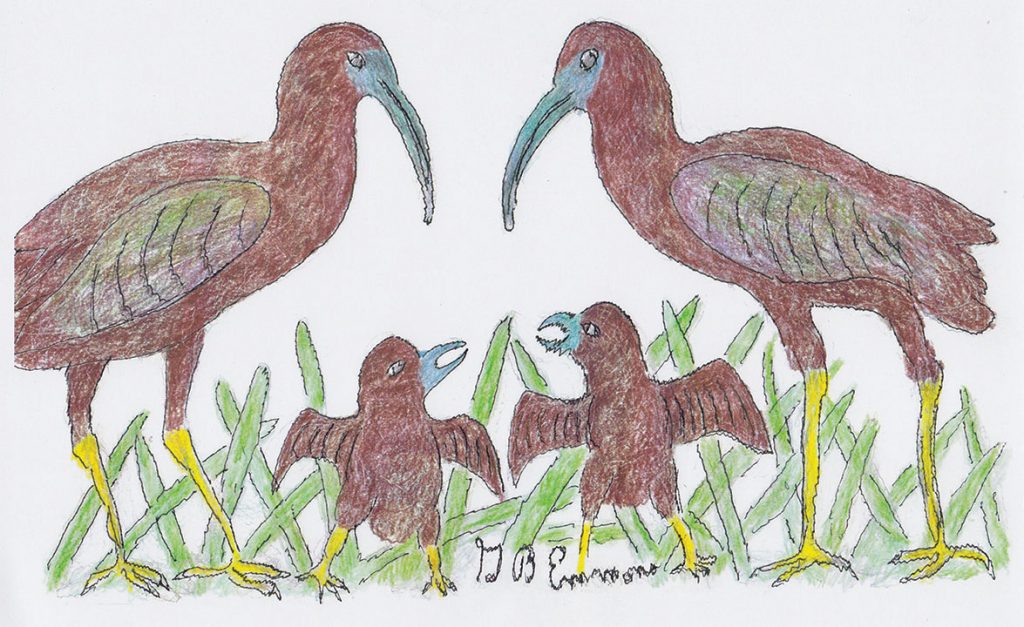The glossy ibis is not well-known, because it is rarely seen in this part of the world. It is a distinctly different-looking stork-like bird with dark, iridescent plumage and a long, curved bill to probe shallow waters for insects and shellfish along the shoreline. In addition to consuming animal matter along coastal Buzzards Bay, a major part of their summer diet is green plants and vegetable matter.
As in my illustration, the first sign of residence here in a very long time is a pair of nesting parents with only two chicks recently seen about halfway down along Sconticut Neck in Fairhaven. This surprise sighting may hopefully indicate a modest uptick in future populations for birdwatchers.
These young chicks that were hatched in early July will for another month depend on their parents for feeding by inserting their bills into a parent’s mouth for regurgitation of food bits that can be eaten on their own.
As fledglings learn to fly in September, the nest site will be abandoned, and they will be on their way of migration along the Atlantic Flyway. However, this mysteriously rare species may disappear from tracking and not be seen again next year. Although this species has declined due to global environmental deterioration in modern times, it has been all over the world for thousands of years, including the sacred ibis that once lived in Egypt.
It was raised from wild birds to be depicted in many ancient Egyptian wall murals and sculptures to be found as mummified specimens at many burial sites to play a religious role as “Thor,” the god of wisdom, knowledge, and writing. It was considered the herald of floods and helped to get rid of pond snails and liver parasites. The magical reproduction on burial sites might decorate the tomb so that the dead were eligible to enter into the aftermath of the next world. From that time to that of primitive and prehistoric cultures, birds have come down through the ages as symbols of spiritual superstitions.
Like those living thousands of years ago, we also live our lives from dawn to dusk, exposed to the elements around us in the planetary spiral of seasons around the Earth. We are learning to appreciate the spiritual role of winged creatures, such as the heavenly angels of our own departed into another afterlife. For now, our best insight into the present nature of reality is birdwatching of the natural blessings around us every day in our travels.
By George B. Emmons
